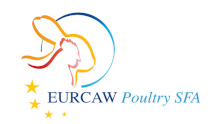Document type: scientific review published in the Journal of Animal Science
Authors: Anna K Johnson, Jean-Loup Rault, Jeremy N Marchant, Emma M Baxter, Keelin O'Driscoll
Preview: Considering welfare through the "neonatal and nursery pig perspective" is an exciting approach and one that resonates with consumers. Overlaying this with the Five Domains Model, as we suggest in this review, points to practical on-farm improvements that provide each pig the opportunity to experience positive mental states. The Five Domains Model is broken into physical and functional states, which include Domain 1: Nutrition, Domain 2: Physical Environment, Domain 3: Health, and Domain 4: Behavioral Interaction, and Domain 5: Mental State. The Five Domains Model can build on the breadth and depth of swine welfare science to highlight opportunities to improve welfare on-farm. In Domain 1, management of increasingly large litters is considered, with examples of sow vs. artificial rearing, colostrum quality and quantity, and creep feed management strategies. Efforts can result in positive mental states such as feeling full and content and the ability to experience the pleasure of drinking and food tastes and smells. Domain 2 considers space complexity and access to key resources, along with thermal and physical amenities, to promote feelings of physical comfort. Domain 3 considers pig health in three broads, yet inter-linking categories 1) congenital and hereditary health, 2) environmental pathogen load, and 3) colostrum quality and quantity, and its effect on the microbiome. Improvements can result in a pig that displays vitality and feels healthy. Domain 4 provides the pig opportunities to express its rich behavioral repertoire, specifically positive social interactions, play, and exploration. These efforts can result in pigs feeling calm, safe, comfortable, having companionship, engaged, interested, and rewarded. In conclusion, using the Five Domains Model can highlight numerous opportunities to improve current and future housing and management through the "neonatal and nursery pig perspective" with a focus on inducing positive mental states that can result in improved quality of life and welfare state.




